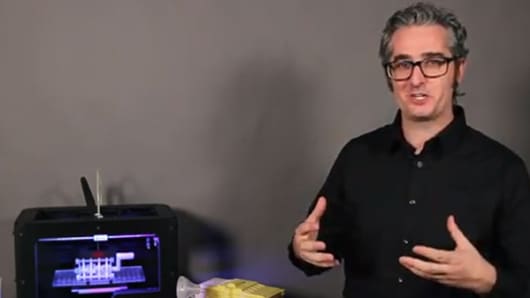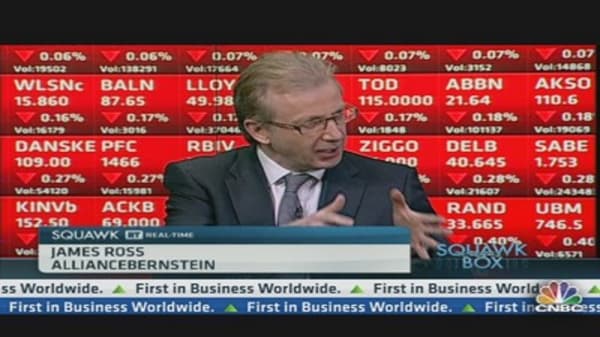Bre Pettis believes we're on the brink of the next industrial revolution. In this revolution, mass production is replaced with personalized production. Overseas supply chains are eradicated to favor local creations. Creativity doesn't just inspire — it produces physical stuff.
In this revolution, the tinkerer is king.
Of course, there's quite a bit of hyperbole at play here, but Pettis, founder of 3-D printing pioneer MakerBot, may be on to something.
(Read more: 3-D Printing Sparks Innovation Among Small Companies)
"MakerBot is leading the next industrial revolution," he said at SXSW, during which he unveiled the company's newest MakerBot model, the Digitizer, which can scan a physical item — like a garden gnome — and record its precise 3-D rendering. "And we are empowering people to make stuff."
It was a fitting speech, given the rise of hardware startups, many of them on display at this year's SXSW.
Founded in Brooklyn, NY
Pettis, a Web designer by trade and a self-described "maker" by nature, co-founded MakerBot in Brooklyn in 2009. MakerBot sells some of the world's most popular and affordable 3-D printers in the world. For about $2,000, a MakerBot user can translate his or her 3-D designs into a plastic model — a prototype. The company has grown from a hobbyist's curiosity into a full-fledged creative movement. Hardware companies see it as a way to save money on the prototyping process. Scientists see it as a tool to make new medical products. Not surprisingly, investors see it as a good business.
(Read more: Robot Revolution: How to Stay Calm and Make Money)
MakerBot has raised about $10 million from the Foundry Group, Bezos Expeditions, True Ventures, RRE Ventures, and Sam Lessin, and recently opened a MakerBot store in New York City.
I sat down with Pettis to discusses his visions of the next-generation industrial revolution:
Tell me about the growth of MakerBot.
When we were here four years ago, there was three of us. I brought a prototype here and just prototyped shot glasses at bars all day. Now, we've got 165 people, a manufacturing facility that's huge, and actual offices where we have desks.
When did you realize this was going to be big?
Basically, when we started shipping them out. When we first made MakerBots, we knew people would use them, but we didn't know what they would make. And that potential energy of what could happen — that's when I really started thinking about the industrial revolution and what could happen. Getting these tools into people's hands —it democratizes things. It makes it accessible for people to do things. It's getting to the point where if you have an idea, you can make it. You don't have to be scared.
How is the MakerBot changing the approach to prototyping?
Before, if you wanted to manufacture something, you had to have a connection to a factory. That's not easy. When you have a MakerBot, you basically have everything you have in a factory, on your desk. You can iterate. You can keep making your ideas better and better.
How are entrepreneurs — or even just people who want to make a product to sell — using MakerBot?
Take Chris, a musician, for example. He made a "Square Helper," a device that you use so that your Square doesn't move when it's plugged in to your iPhone. He designed it, and then he went to make it. Entrepreneurs can either do it the traditional route with injection molding and tooling, or just buy a MakerBot. If he needs to sell more, he just makes more that day, rather than go through a three-month injection molding process. That ability to iterate and move quickly really opens things up for entrepreneurs. On another level, a company like LevelUp, the payment start-up, used us to make their prototype. And it saved them $30,000.
(Read more: How 3-D Printers are Remaking Medicine)




